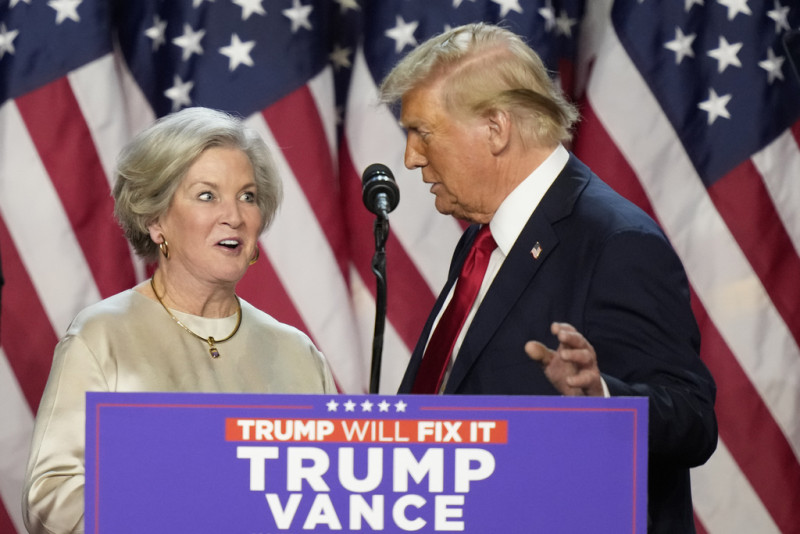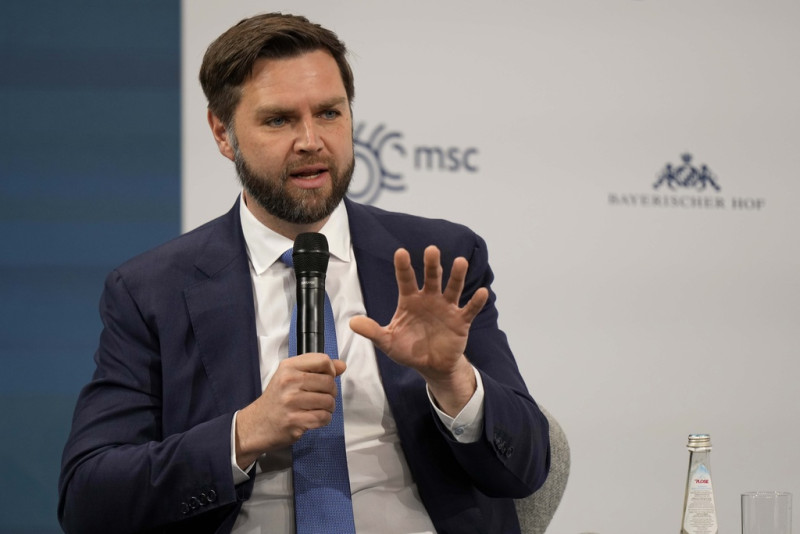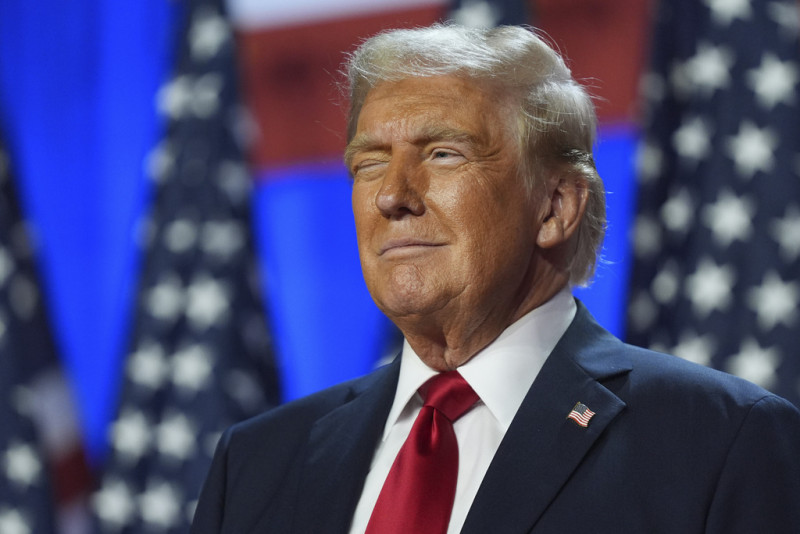In four years out of the White House, Trump has had plenty of time to plot his revenge – The first signs Trump has sent of what he plans to do in his second term are beginning to fade
On January 20, 2017, the first day that Mr Donald Trump walked into the Oval Office, the first thing he noticed was the lighting. “How do they manage to have such lighting?”he wondered before inviting his daughter Ivanka and son-in-law Jared Kushner to come inside and take pictures with him.
Journalists Peter Baker and Susan Glasser use this story at the beginning of their book “The Divider,” perhaps the best book about those tumultuous years in the White House.
With roughly 70 days to go until Trump crosses that White House threshold again, assuming the role of president for a second term, the story of that first day is a stark reminder: Trump, who initially assumed the tasks by surprise and with little understanding of the complexities of governing the world’s top power, he will now return with several weapons in his quiver.
After four years of “political exile”, he had plenty of time to plot his revenge. In other words, the tycoon seems ready to fulfill his promises… In fact, this time he needs no introduction as to where or especially who turns on the lights in the White House.
The first signs Trump has sent of what he plans to do in his second term are beginning to fade. The president-elect, having just declared victory, began assembling his transition team by appointing Susie Wiles, the discreet and loyal “architect” of his successful campaign. The move aligns with what his future vice president, JD Vance, called “the greatest political comeback in the history of the United States.” Wiles is set to become Trump’s chief of staff, a position that has never been held by a woman.
Trump’s “army”.
The importance of the position of chief of staff – akin to a shadow prime minister – cannot be overstated, nor the degree of power he wields when it comes to organizing life within the official residence and managing access to the president. Fans of “The West Wing” will remember Leo McGarry’s pivotal role. Susie Wiles, who on LinkedIn lists among her skills: “creating order out of chaos”made it a condition of her acceptance of the role that she has the final say on who enters the Oval Office. And that says a lot about what we will see in the near future. Obviously, the aim will be to avoid the image of a circus.
Trump may not have changed, but everything around him has. Whether these changes will be enough to temper the impulses of a man famous for his “You’re fired!” line… remains uncertain.
Reince Priebus, the first of four chiefs of staff during Trump’s tenure from 2017 to 2021, once noted that Trump “only likes two kinds of people: those who worked for him and those who are going to work for him.” him”. For this new chapter, Trump is looking for loyal members of the MAGA movement who are unlikely to challenge him. This time, the list includes names like entrepreneur Elon Musk, who has said he plans to work as an adviser on curbing federal spending, or Robert F. Kennedy Jr., a famous anti-vaccinationist who, to the surprise of the medical establishment, being considered for a leadership role in health management.
Other names include Sen. Marco Rubio (Fla.), who is rumored to be in the running for secretary of state if Kennedy doesn’t prevent him, and Sen. Mike Lee (Utah), who is being promoted for attorney general. North Dakota Gov. Doug Bergham is considered a candidate for “energy czar.” Scott Bessent is also being considered for Finance Minister.
Another central figure is his next vice president, JD Vance. A staunch far-right populist and outspoken. It’s an option Trump seems far more comfortable with than Mike Pence, his running mate eight years ago. Pence began his term in 2017 fully aware that his role would be largely difficult, and ended it under extraordinary circumstances: running away from a mob of Trump supporters who, during the Jan. 6 attack on Capitol Hill, they were calling for him to be hanged.
A perfect storm of power
Unlike his first term, Trump’s incoming cabinet is poised to take advantage of the fact that the Senate is controlled by Republicans. This is a significant difference from 2017, as Trump is not returning as a president who lost the popular vote or amid suspicions of foreign meddling.
Instead, he will enter office with a strengthened mandate, well-positioned to pursue his longtime goals: dismantling the Washington bureaucracy—potentially threatening thousands of federal jobs—and curtailing transgender rights, particularly in women’s sports and the army.
Adding to this unprecedented power is the support of the Supreme Court, which now has the largest 6-3 conservative supermajority it has seen since the 1930s. It is worth noting that three of these justices were appointed by Trump during the his first term. If he can get one of the three progressive justices to retire, he could cement his influence on the court for decades.
Trump, who showed little respect for the law and democratic traditions in his first presidency, returns to the White House in a scenario clearly more favorable than before, with the confidence born of the support of a diverse coalition of voters.
Furthermore, surviving two assassination attempts during the election campaign further cemented his status as a fighter, even as someone touched by God… Amid inflation-fueled discontent and disillusionment with elite complacency, the Trump managed to convince voters to focus on periods of economic prosperity during his first term. This selective memory overshadowed the most controversial moments of his administration, such as his harsh policy of separating families at the border, paving the way for the Supreme Court to overturn abortion rights, and his infamous proposal to inject bleach as medicine about the coronavirus.
Deportations are coming…
His promise to carry out the largest deportation operation in US history, using an 18th-century law allowing the deportation of “enemies”, will come true. But before that move – on his first day in office – he plans to “seal” the border. It is not clear how he plans to carry out such a large-scale operation, nor how he will pay for it: there are about 11 million undocumented immigrants in the US, although Republicans often inflate that number to 15 million.
Among other measures, Trump – who won historic support from Latino voters – has promised to end DACA, the program that protects “Dreamers,” young people who came to the U.S. illegally and renew their papers every two years.
Financial promises
The practicality and impact of Trump’s economic promises also remain unclear. These proposals, which appear to have been made without careful consideration of their implications, were effective in convincing millions of voters who were willing to believe in his ability to lower the cost of living and control inflation, despite the fact that the Fed of the US has already taken steps to deal with inflation.
His strategy includes tax cuts that range from corporate taxes to property taxes and even taxes on Social Security benefits, gratuities and overtime pay. Experts warn that this series of populist initiatives could worsen the already dire government deficit, potentially adding about $6 trillion over the next decade.
Trump’s protectionist policies are aimed at boosting domestic manufacturing by imposing tariffs, a move that risks fueling further trade tensions with China – a nation with which the US trades about $750 billion in goods and services annually. According to the Peterson Institute for International Economics, these measures could burden American households with an additional $2,600 in annual costs.
Among the tasks scheduled for Jan. 20, 2025 — Trump’s first day back in the Oval Office — will be processing the pardons of hundreds of people jailed for their roles in the Capitol attack, whom he calls ” hostages’ of federal justice. Unlike his first term, this time he will approach the day with an intimate familiarity with the workings of the presidency, not worrying about how the lights go on…
Source :Skai
With a wealth of experience honed over 4+ years in journalism, I bring a seasoned voice to the world of news. Currently, I work as a freelance writer and editor, always seeking new opportunities to tell compelling stories in the field of world news.














